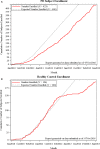The Parkinson's progression markers initiative (PPMI) - establishing a PD biomarker cohort
- PMID: 30564614
- PMCID: PMC6292383
- DOI: 10.1002/acn3.644
The Parkinson's progression markers initiative (PPMI) - establishing a PD biomarker cohort
Abstract
Objective: The Parkinson's Progression Markers Initiative (PPMI) is an observational, international study designed to establish biomarker-defined cohorts and identify clinical, imaging, genetic, and biospecimen Parkinson's disease (PD) progression markers to accelerate disease-modifying therapeutic trials.
Methods: A total of 423 untreated PD, 196 Healthy Control (HC) and 64 SWEDD (scans without evidence of dopaminergic deficit) subjects were enrolled at 24 sites. To enroll PD subjects as early as possible following diagnosis, subjects were eligible with only asymmetric bradykinesia or tremor plus a dopamine transporter (DAT) binding deficit on SPECT imaging. Acquisition of data was standardized as detailed at www.ppmi-info.org.
Results: Approximately 9% of enrolled subjects had a single PD sign at baseline. DAT imaging excluded 16% of potential PD subjects with SWEDD. The total MDS-UPDRS for PD was 32.4 compared to 4.6 for HC and 28.2 for SWEDD. On average, PD subjects demonstrated 45% and 68% reduction in mean striatal and contralateral putamen Specific Binding Ratios (SBR), respectively. Cerebrospinal fluid (CSF) was acquired from >97% of all subjects. CSF (PD/HC/SWEDD pg/mL) α-synuclein (1845/2204/2141) was reduced in PD vs HC or SWEDD (P < 0.03). Similarly, t-tau (45/53) and p-tau (16/18) were reduced in PD versus HC (P < 0.01).
Interpretation: PPMI has detailed the biomarker signature for an early PD cohort defined by clinical features and imaging biomarkers. This strategy provides the framework to establish biomarker cohorts and to define longitudinal progression biomarkers to support future PD treatment trials.
Figures
References
-
- Athauda D, Foltynie T. The ongoing pursuit of neuroprotective therapies in Parkinson's disease. Nat Rev Neurol 2014;11:25–40. - PubMed
-
- Goetz CB, Tilley BC, Shaftman SR, et al. Movement Disorder Society‐sponsored revision of the Unified Parkinson's Disease Rating Scale (MDS‐UPDRS): scale presentation and clinimetric testing results. Mov Disord 2008;23:2129–2170. - PubMed
LinkOut - more resources
Full Text Sources
Other Literature Sources
Research Materials
Miscellaneous


